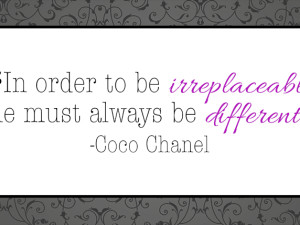
This is the age old question that plagues fashion brands all of the time when going global…..if you adapt your product for international markets, are you ruining the integrity of your brand?
In this article, I am not referring to packaging for legal or logistic reasons or even advertising adaptations where certain words or phrases can translate differently (sometimes offensively) into other languages. I am talking about making design or other changes to the actual physical product.
Picture this scenario…..
You have just launched your premium denim brand in China yet sales are slower than you had anticipated. After speaking to the local Chinese sales team, you discover that higher priced basic denim hasn’t been performing well in China.
The sales team explains that “one can find good quality basic denim all over the country for very competitive prices. If you don’t embellish it with embroideries, appliques or other “bells and whistles,” it will be difficult to sell. In short, the Chinese consumer just doesn’t understand the concept of expensive basic denim”.
So, now what do you do? Adapt your styles in order to better accommodate local Chinese preferences or leave them as they are and stay true to your brand?
This is an actual scenario that occurred at the company where I worked several years ago. We debated the issue internally and with our China partner….finally deciding to leave the product as is. This decision allowed us to maintain the integrity of our brand, but in the end…..we never sold much denim.
Well, things have changed in China over the years and it is not uncommon for brand conscious Chinese consumers to shell out large sums of money in order to buy famous premium basic denim brands. However, the issue of product localization still remains a hot topic and fashion brands debate the question “to localize or not to localize” all of the time.
For many luxury brands, the decision to localize their product for the international consumer is often a resounding NO! They strongly feel that the essence of a luxury brand is built on its originality and authenticity. Consumers want the real thing. They do not want a local version of the original.
I believe that this perception is true for many luxury brands, especially brands such as Louis Vuitton and Gucci that sell expensive logo-driven or iconic handbags and accessories. Even companies attempting to “knock off” these brands try desperately to copy the original product.
Yet, the issue seems to get cloudier when it comes to clothing due to fit, color, style and design considerations…… people want to wear what looks good on them….and at the same time, be culturally accepted and in style in their country.
So, the question remains….should a fashion brand tweak or adapt any of its offering to better suit local consumer tastes when going global?
In my opinion, the answer is “It depends…it depends on the brand, the item, the country, the price, the climate, the types of changes or additions to be made and the costs vs benefits of localizing.”
If you are a world famous brand that is selling a country or international “lifestyle” like Diesel, then adapting the product for foreign markets may defeat the purpose of what the brand is trying to accomplish.
But the majority of brands around the world are not so well known and may be forced to adapt certain elements of their collection in order to get placed and sold in countries that are culturally different. Sometimes changes can be as simple as adjusting specs so the fit is more in line with the body type of the country’s consumer whom you will be targeting.
With that said, design, spec and other product adaptations can put a lot of pressure on the supply chain so it is critical that there is enough need and demand for the new product. Minimums need to be met and product costs, margins and pricing must make financial and commercial sense.
For smaller brands, localizing can be particularly difficult, if not impossible, due to small runs which ultimately result in higher product costs and higher retail prices. Often, a brand must wait until it has developed a significant volume in its core business before it can realistically begin to adapt products for international markets.
So, in short, the decision to localize products for global markets is a sensitive topic and must not be taken lightly.
If you find that it is commercially necessary, the general “rule of thumb” is to always protect the “spirit” or “core identity” of your brand.
As a brand owner, you must know when to say “no” to localization. Not every trend works for every brand and not every style works in every country. The most successful brands are those that can tweak their offering without the consumer ever really knowing that changes have been made because the product looks and feels like the original.





